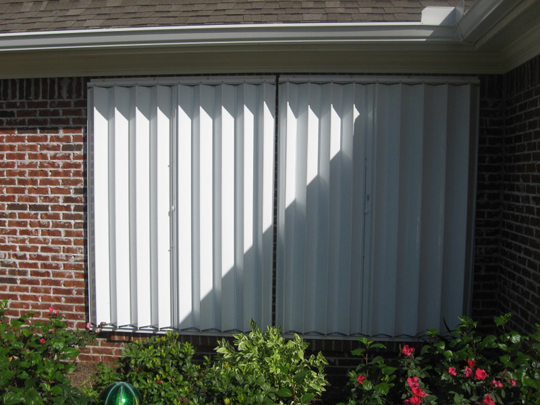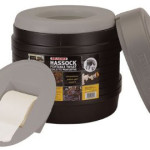
Hurricanes can be tracked by satellite and experts can predict when and where they will make landfall with a great deal of accuracy. This means you have time to evacuate, but it does not necessarily mean you have time to prepare so you can “ride out the storm”. Preparations should be an ongoing endeavor in the months leading up to hurricane season.
In the days, leading up to the disaster is not the time to try to stockpile enough food and water, and to get your home ready.
Many others will have put off preparations until there are warnings and alerts as well. This means the store shelves will be emptied in a matter of hours in some cases and you will likely end up empty handed.
You have heard the saying you cannot repair a roof in the rain and yet it does not need repairing when it is not raining, so essentially it never is repaired. You have to prepare for a hurricane when the threat is not looming. Preparing over time lessens the economic burden and ultimately means you obtain what you need to survive a hurricane.
Preparing Your Home
Many people are convinced they will never leave if a hurricane strikes, they say it year after year and on occasion do manage to stay and survive, while other times pack up the car and leave searching for safer areas inland. Regardless of whether you leave or stay however, you want your home as ready as it can be to survive the onslaught.
Inspect the outside of your home for trees and heavy shrubbery that can damage your home in heavy winds. Trees to close to the home with overhanging branches will cause damage as well as large shrubbery that can thrash against the home. Have a place to move all outdoor furniture inside such as a garage or storage shed. Ensure your storage shed is properly anchored, because if it is thrown against the home it will cause considerable damage.
Consider hurricane shutters that can be shut and secured to prevent debris from breaking through the glass that can cause injuries and allows wind and rain inside your home. Plywood is an option but it is usually not put over the windows until the storm is near and if you do not have a supply on hand, you may not be able to obtain any from local retailers in the days leading up to the storm. Hurricane shutters are typically left on the house to become part of the home’s exterior décor. Ensure the shutters are of good quality and are designed to stop flying debris and tree limbs from smashing the windows.

Tidal surges are a real threat during any hurricane and flooding can occur miles inland, so not only do you have to prepare for wind damage you have to be ready for flooding.
To determine if your area is susceptible to tidal surges and for more information on surges please visit http://www.nhc.noaa.gov/surge/
For information on what your local or state government has done to prepare for a disaster please visit http://www.fema.gov/regional-operations/state-offices-and-agencies-emergency-management
Inside Your Home
 There will be an interruption of services, so this means no electricity, running water or gas for cooking or hot water. You will also not be able to use the toilets and drains in most cases. Most sewage systems have flood valves that will be close to prevent water from flooding the system and overflowing onto the streets (raw sewage is often times present in floodwaters despite the flood valves being closed). This typically means that any waste pushed down your drains may very well back up into the home. You will need a way to collect and dispose of human waste inside the home.
There will be an interruption of services, so this means no electricity, running water or gas for cooking or hot water. You will also not be able to use the toilets and drains in most cases. Most sewage systems have flood valves that will be close to prevent water from flooding the system and overflowing onto the streets (raw sewage is often times present in floodwaters despite the flood valves being closed). This typically means that any waste pushed down your drains may very well back up into the home. You will need a way to collect and dispose of human waste inside the home.
Use portable chemical toilets or waste bags designed for this specific purpose.
Emergency Essentials
- Have between 10 and 14 day’s supply of drinking water and use the one gallon a day per person recommendation to calculate amounts. This allows water for hydration and oral care and brief sponge baths but does not include enough water for cooking or laundry
- Ten to 14 day supply of foods that require little to no preparation remember you may not have the means to heat or prepare the foods
- Illumination such as oil or propane fueled lanterns, avoid candles because any open flame is a fire hazard and you want the ability to carry the light outside with you so make sure the lanterns have protective globes
- Portable radio
- Rain gear for every member
- Thermal blankets for each person
- Flashlights
- Matches and lighters
- Portable camp stove that uses propane and/or charcoal/gas grills for outside cooking only
- Liquid heat gels (Sterno) to heat foods in pots and pans
- First aid supplies and any prescription/maintenance medications along with over the counter medications for pain, stomach upset and allergies
- Hand sanitizer, insect repellent and/or netting
- Work gloves, shovel, brooms, garbage bags, safety glasses used for cleanup
- Axe, sledgehammer, pry bar and hand saw for extraction/rescue operations
- Sheets of plywood, tarps, plastic sheeting, duct tape and tools to make emergency repairs to your home
Keep everyone in the same room during the storm preferably in a room without windows or doors to the outside and with at least one load-bearing wall. Have your supplies in there with you so you do not have to search for them if there is damage to the home and this may help prevent damage to your supplies as well.
Be Ready To Evacuate Regardless
You may have convinced yourself you would never leave but once the water levels rise and you know you will be cut off for days or even longer, you may decide you have to. Be prepared to leave by knowing the evacuation routes and have alternatives ways of getting there. Roads and highways may be flooded or trees and poles may be across the roads so you must always have backup routes mapped out. Ensure that more than one family member knows the routes.
During hurricane season make sure your vehicle is always fueled up, and once you know a storm is likely move a portion of your food and water into the vehicle so you do not have to spend time packing, You may have to leave in a hurry so be ready well ahead of time. You cannot assume you will be able to find a motel/hotel and may have to stay in your vehicle once out of the danger area so make sure you have the essentials to survive for three days with you at all times.